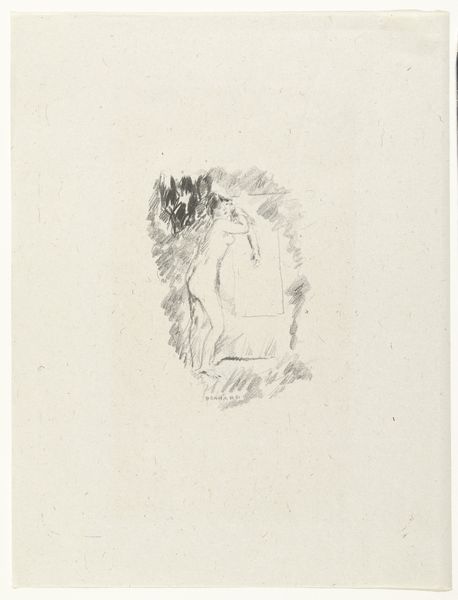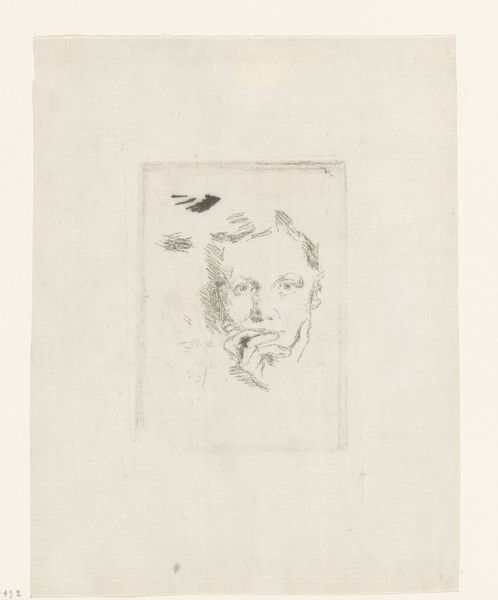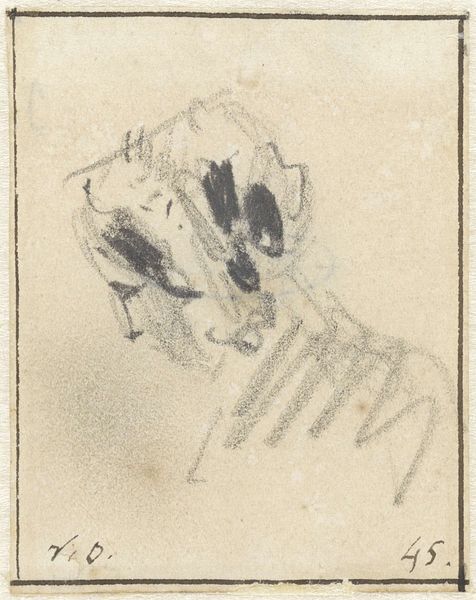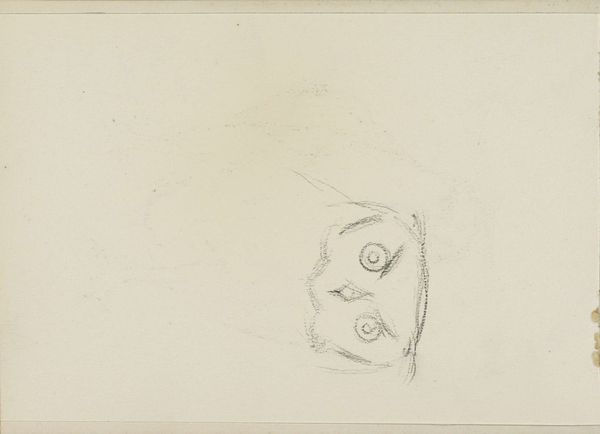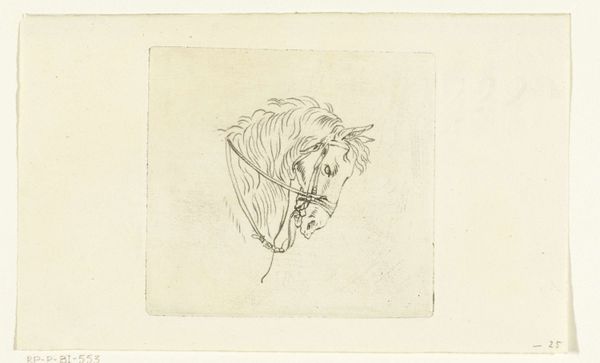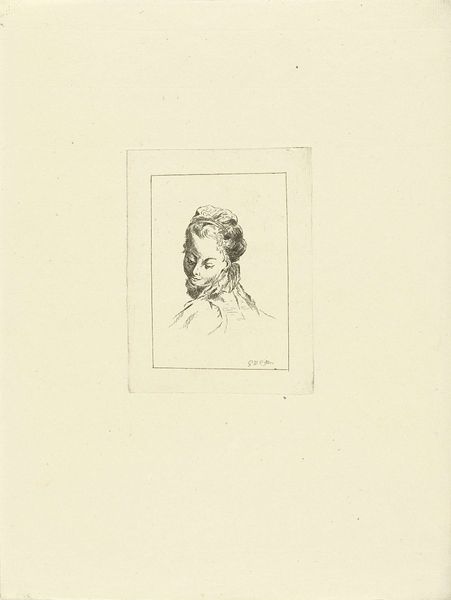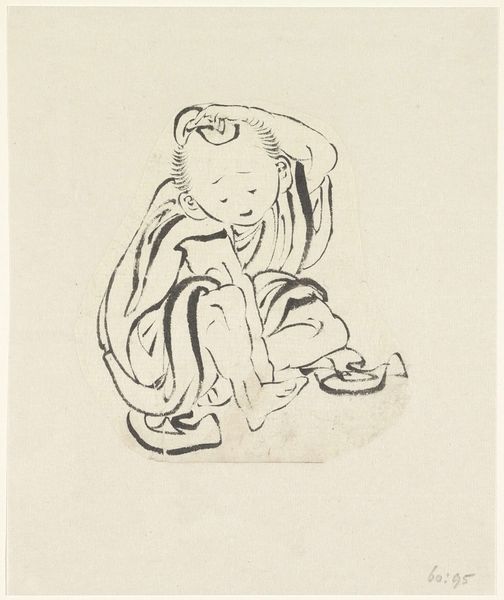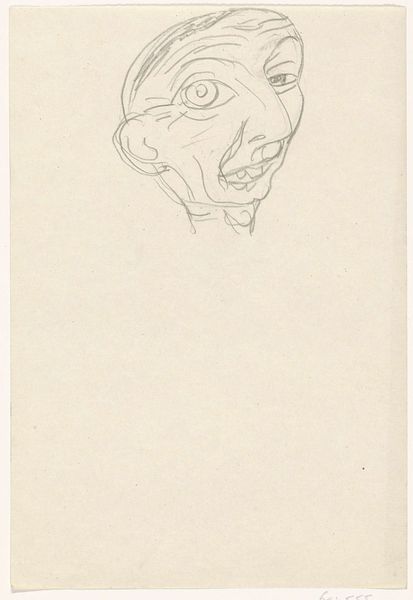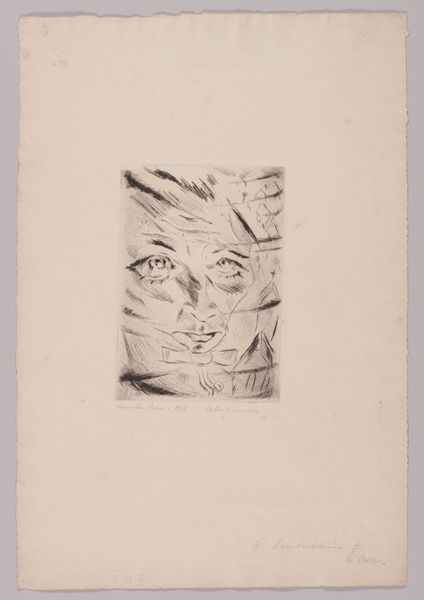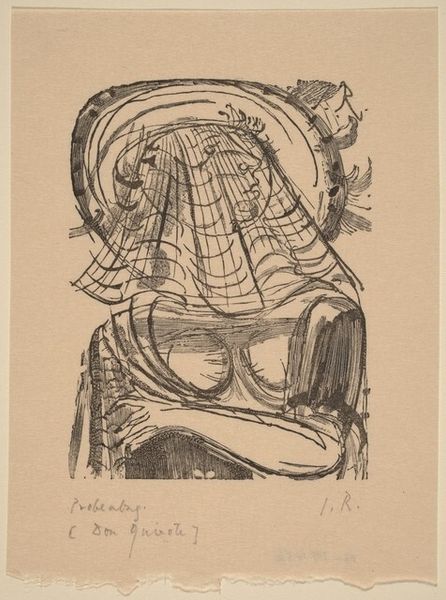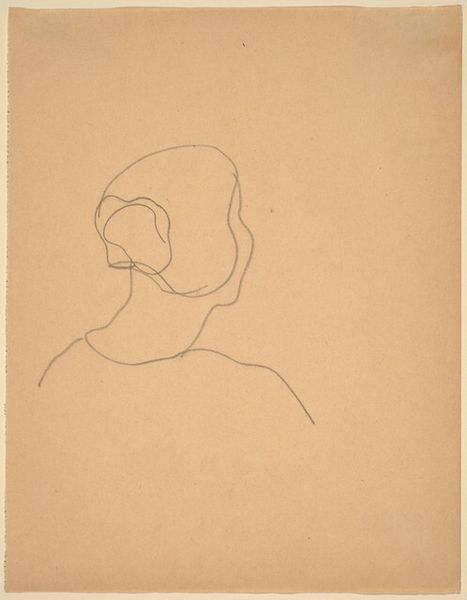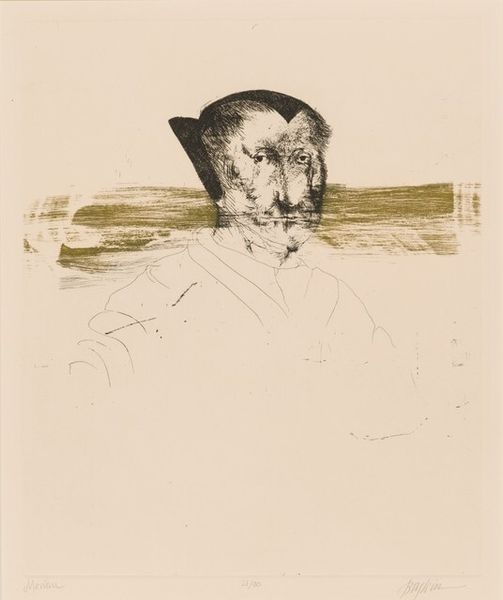
drawing, print, etching
#
portrait
#
drawing
#
ink drawing
# print
#
etching
#
figuration
#
expressionism
#
line
Copyright: Public Domain: Artvee
Editor: Here we have Egon Schiele’s 1914 etching, "Portrait of Franz Hauer." It's a striking head-and-shoulders image rendered with such frantic, almost violent lines. What do you make of the psychological impact of this work, Curator? Curator: This portrait, even within Schiele's oeuvre, is unusually raw. Looking at the date, 1914, the looming shadow of World War I is unavoidable. Consider how Expressionism, and Schiele specifically, grappled with societal anxieties regarding masculinity and power structures amidst a changing world. The frantic lines aren’t merely stylistic; they’re indicative of a societal fracturing, perhaps even a breakdown of traditional male identity. Do you perceive any markers of societal status on Hauer? Editor: I see no markers of traditional status - no symbols of wealth or power. The bald head and unkempt facial hair almost seem to reject those societal norms entirely. It seems a very immediate portrayal. Curator: Precisely. Schiele's portraits often explored the raw, unvarnished self. This stripping away, this deliberate lack of societal adornment, challenges us to see Hauer not through the lens of his position, but as a vulnerable individual. How does this portrayal resonate with discussions surrounding gender roles and vulnerability within a pre-war context? The figure looks off to the right; could the work point towards potential escape and opportunity for new identities or rather avoidance, perhaps indifference, concerning contemporary events? Editor: It pushes against conventional heroic representations and raises issues of representation. I guess I’m wondering if he means it to represent all men. Curator: By refusing to idealize or sanitize, Schiele's "Portrait of Franz Hauer" invites us to confront uncomfortable truths about identity, power, and the human condition amidst historical upheaval. The marks are permanently impressed through the printing process - as etched on his face so it is on our cultural memory of war and modernity. Editor: Thank you, seeing it in light of gender and historical anxieties adds a whole other dimension. I will continue to ask such context-rich questions during the remainder of this series.
Comments
No comments
Be the first to comment and join the conversation on the ultimate creative platform.


